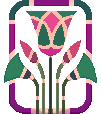
Saturday, March 17, 2012
"Julia with Tea"
3:09pm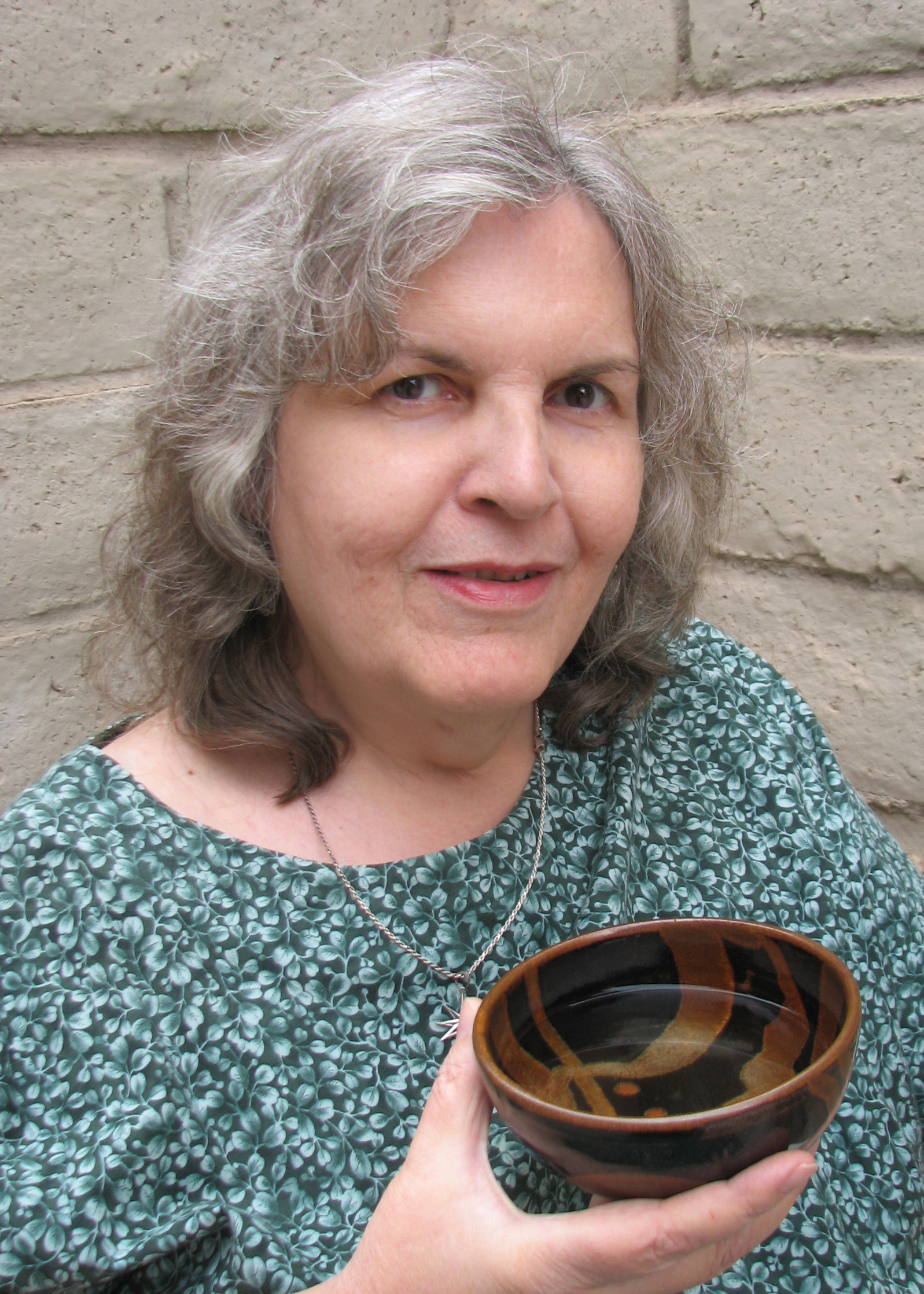
She's got some tasty tamaryokucha tea in that cup!

Saturday, March 17, 2012
"Julia with Tea"
3:09pm
She's got some tasty tamaryokucha tea in that cup!
|
I was looking at _Chronicle of the Pharaohs_ by Peter Clayton, and found an unusual image of the god Ptah and King Senwosret I (aka Senusret I or Sesostris I) in a rather intimate embrace. From his heb-sed temple at Karnak, the relief is now at the Cairo Museum. I scanned the photo at 800dpi and made plans to trace it. In the meantime, I looked for more info. I wasn't able to find any other reference photo. All images
on the web, such as the one at touregypt.net, stem from Clayton's photo. I did find other info, however. Clayton's book says Senwosret's temple was 'destroyed'. William Stevenson Smith and William Kelly Simpson explain why. Amenhotep III had dismantled it to use in the foundation filler of his Third Pylon. Archeologists have been able to "reconstruct a small Heb-Sed pavilion" by recovering the blocks from Amenhotep III's foundation.
The relief of Ptah and Senwosret has a bad crack in it, was this the reason it did not end up in the 'White Chapel' reconstruction? It could be somewhat fragile. In my trace, by looking at Djoser's reliefs, I was able to surmise the position of his hand and bull tail, and give a idea of what was once there:
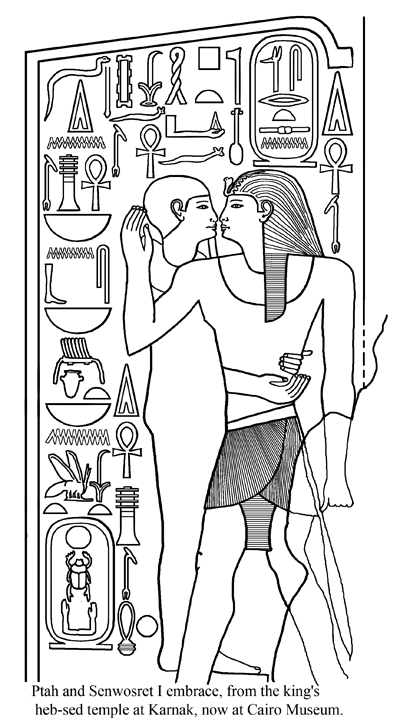 Printable pdf is available
While some of those statues feature his birth name, at least one features his throne name, Kheperkara:
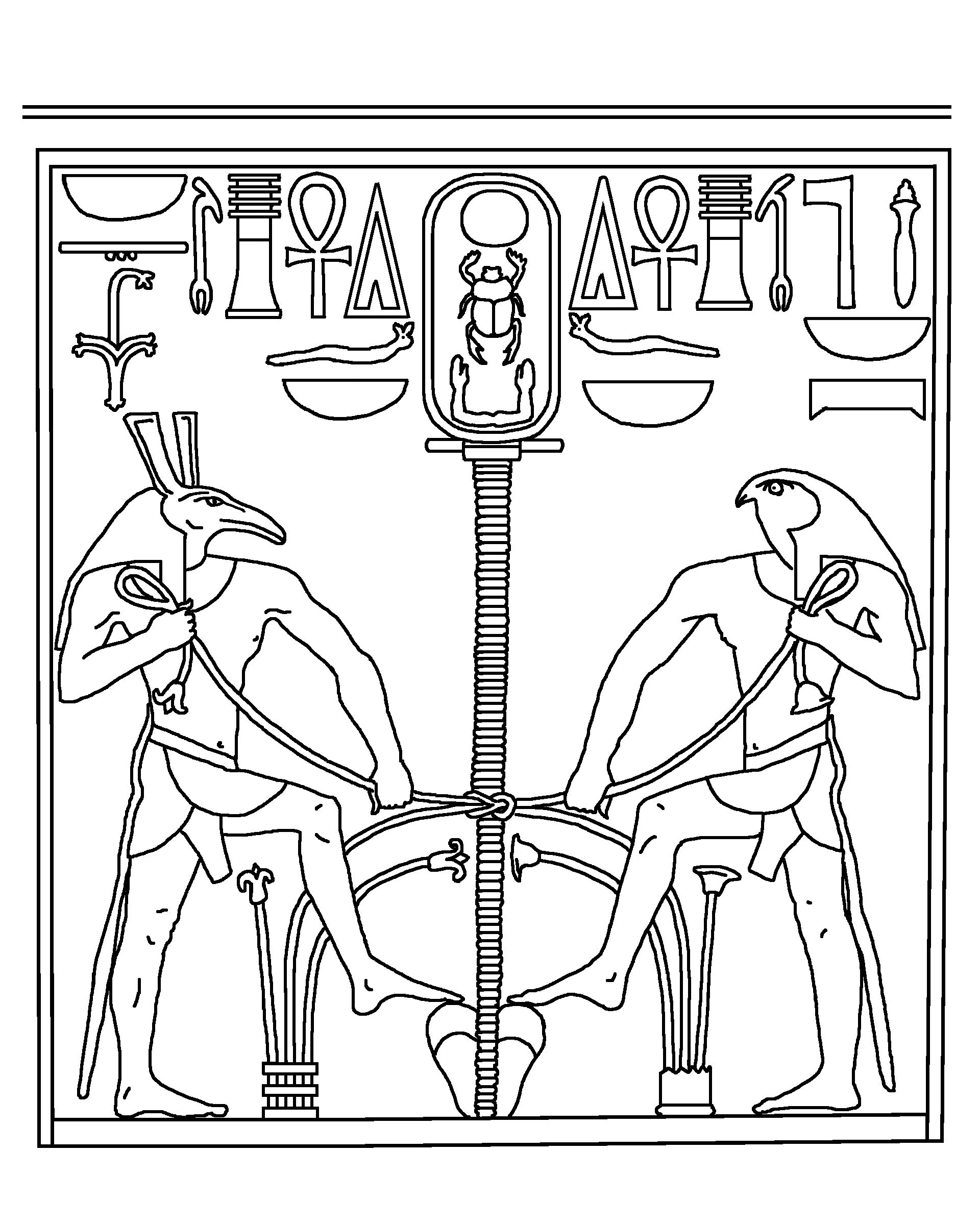 Drawn from a greatly enlarged photo on the web, with reference to other images of his statue thrones, printable pdf is available
_Chronicle of the Pharaohs_, by Peter A. Clayton, Thames and Hudson, 2006 _The Art and Architecture of Ancient Egypt_, by William Stevenson Smith and William Kelly Simpson, Yale University Press, 1998 _Ancient Egyptians: People of the Pyramids_, by Rosalie F. Baker and Charlies F. Baker, Oxford University Press, 2001 _Inside the Egyptian Museum with Zahi Hawass: Collector's Edition_, by Zahi Hawass and Sandro Vannini, American Univ in Cairo Press, 2010 |

Thursday, March 23, 2012 B
"A Tale of Two Egg Cups"
8:17pm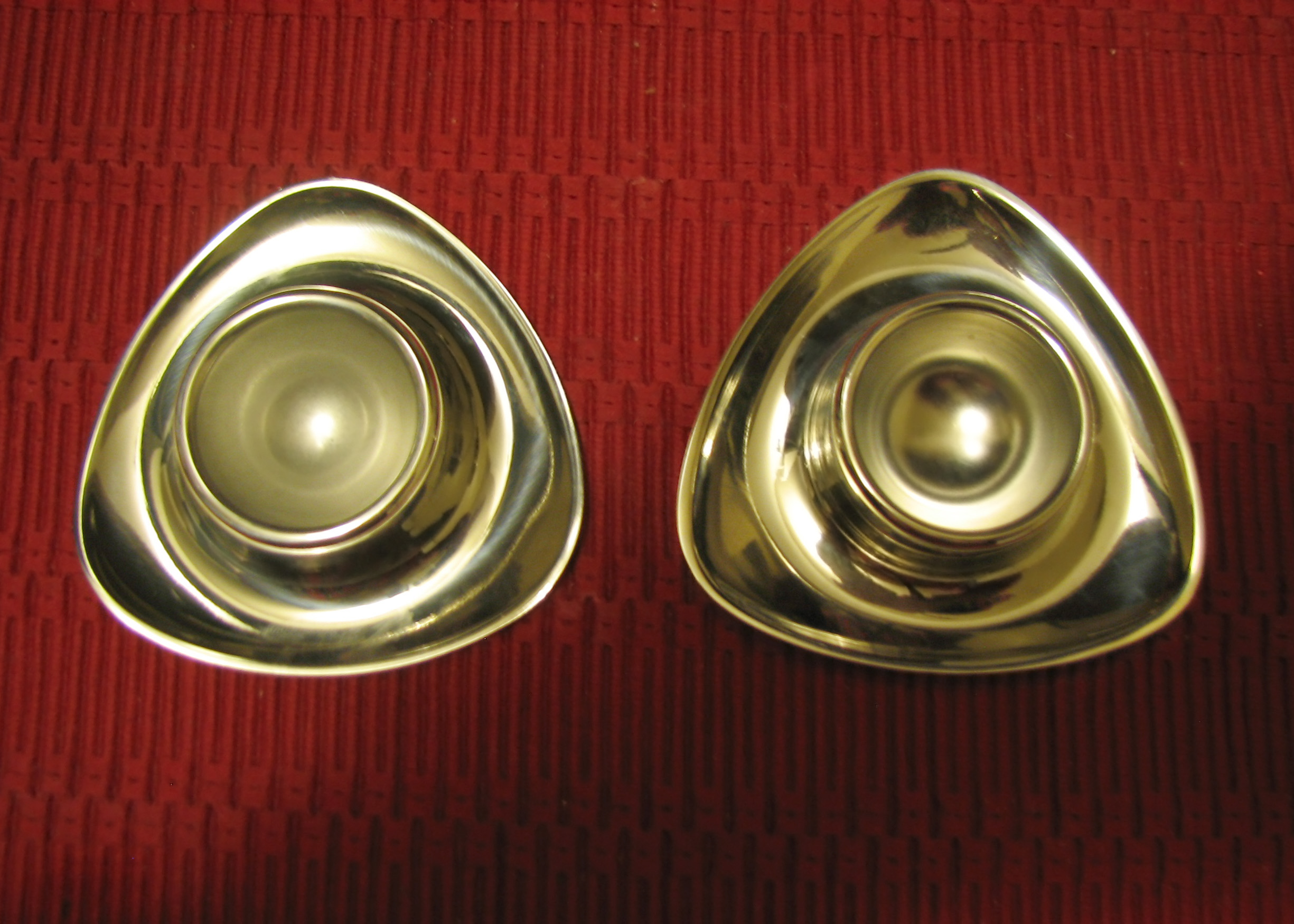
The one on the left is by WMF, the one on the right is by Alessi
|
Both of these were finds at Ebay. I got a pair of the Alessi ones first. Then I spied the pair of WMF ones later. The seller called the German made ones "vintage". Merriam-Webster gives as definition "a period of origin or manufacture." Well, that could be any era. Trying to be more specific, I took to Wikipedia. While they don't list 'collectables', they
do give for 'vintage clothing' a parameter of anything "from the 1920s to 1960s". The boxes the WMF cups came in don't give a date of production, only the item number 06 1731 6049. My web searches have revealed nothing further about these pieces. Meanwhile the Italian made ones are still in production. They were designed by Carlo Mazzeri and Anselmo Vitale. According to their website, Anselmo Vitale "died prematurely in 1978 at the height of his career as an architect and designer." That means the original design couldn't have been made any later than 1978. There are subtle differences. The Alessi cup has a shiny bowl for the egg to sit in, while the WMF cup has a matte bowl. The WMF cup has slightly more rounded edges. No doubt the WMF model was long discontinued before Alessi's went into production. It is the art historian in me, (and good design is a part of art); but I'd like to know more about this.

Sunday, March 25, 2012
According to Griffith and Thompson, it is "the latest known papyrus written in the demotic script; most of the glosses are really Coptic transcriptions.1 Furthermore, "the writing is a strange jumble; the hieratic is inextricably though sparingly mixed with the demotic, a single word being often written partly in hieratic, partly in demotic."2 "The use of hieratic might be thought to indicate some antiquity where it occurs."3 Some sections are copied from earlier times. An ancient Egyptian ships' log, Papyrus Leiden I 350 verso, is certain to be from the time of Ramesses II, as it mentions "the regnal year 52".4 Jacobus Johannes Janssen asserts "that the letters were sent to prince Kha-emwese in his capacity as high priest of Ptah at Memphis and that the papyrus as a whole was intended to be a report to him." 5 Was it because Ramesses II's son Khaemwaset was widely regarded in later periods for his magical abilities that the scribe, possibly himself a magician, included it? Anyway, back to the spells of uncertain vintage. The first spell is meant to be incited while drinking beer, to chase away demons. Set expresses himself in the intoxicating power of the beer:
The magician neglected to advise that this sort of 'magic' should be engaged sparingly! Perhaps too much beer could be the source of a headache experienced by Horus! While he is suffering, his brother Set is guarding him. "The latter's task is (if the restorations of this much damaged passage are correct) to keep Horus' lower parts (the legs) safe from demons, as a kind of guardian-angel. This role is as far as I know, unique for him; but relations between the two brothers were at times friendly, see H. te Telde" 7 Te Velde explains "Horus and Seth are the gods who contend and are reconciled or who are separated and reunited.", 8 "When Horus and Seth are reconciled, they do not fight with one another, but together against the common enemy", which is Apep, "The spear of Horus goes forth against thee. The lance of Seth is thrust into thy brow."9 It is with this co-operation that Set is able to destroy Apophis (aka Apep). So when all are seeking after Ma'at (justice, truth and balance), the gods are a team. In the following spell, the magician goes from recounting the mythic tale to speaking as Set, acting for someone who needs healing:
Two spells invoking Set's power against demons likely originated from the New Kingdom. The demon in question is the 'akhu-demon' or 'samana-demon', "a disease-bearing demon"11 from Sumeria. Simson Najovits explains, "Also during the New Kingdom (from c. 1550 BC), Egypt imported the West Asian mother goddesses Astarte and Anat, as well as a West Asian demon, the ahku-demon or samana-demon."12 I quote excerpts from the two spells:
In the second spell, the magician taunts the samana-demon:
In both of these spells, Horus and Set are working together to finish this demon, as they do with the Apep. Thusly, the gods will learn of its death, when the rumor arrives "at the House of Re, to wit: 'Horus has vanquished the samana-demon!'" 15
1. F. Ll. Griffith and Herbert Thompson, The Demotic Magical Papyrus of London and Leiden, (1904), page 7, as found at http://www.sacred-texts.com/egy/dmp/dmp03.htm (March 24, 1012) |

Wednesday, March 27, 2012
"A Small Discovery"
9:35pm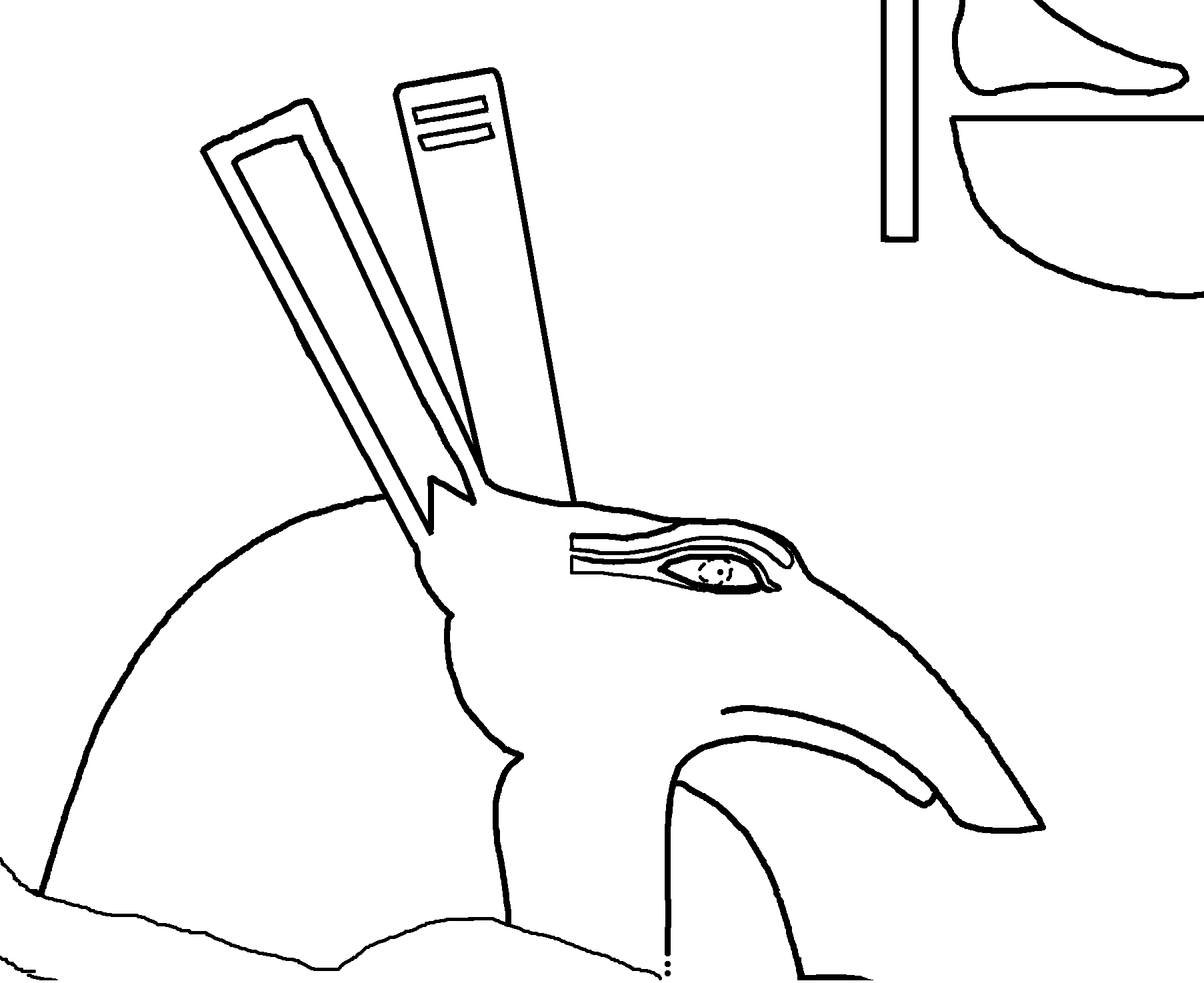
Trace of Set, who is "On a limestone block of a destroyed monument of Thutmose II, in the Open Air Museum, 18th Dyn."
| Thus the original photo is described in KMT magazine, VOLUME 15, NO. 4, Winter 2004-05. It wasn't until I was well into my trace of it that I put two and two together: |
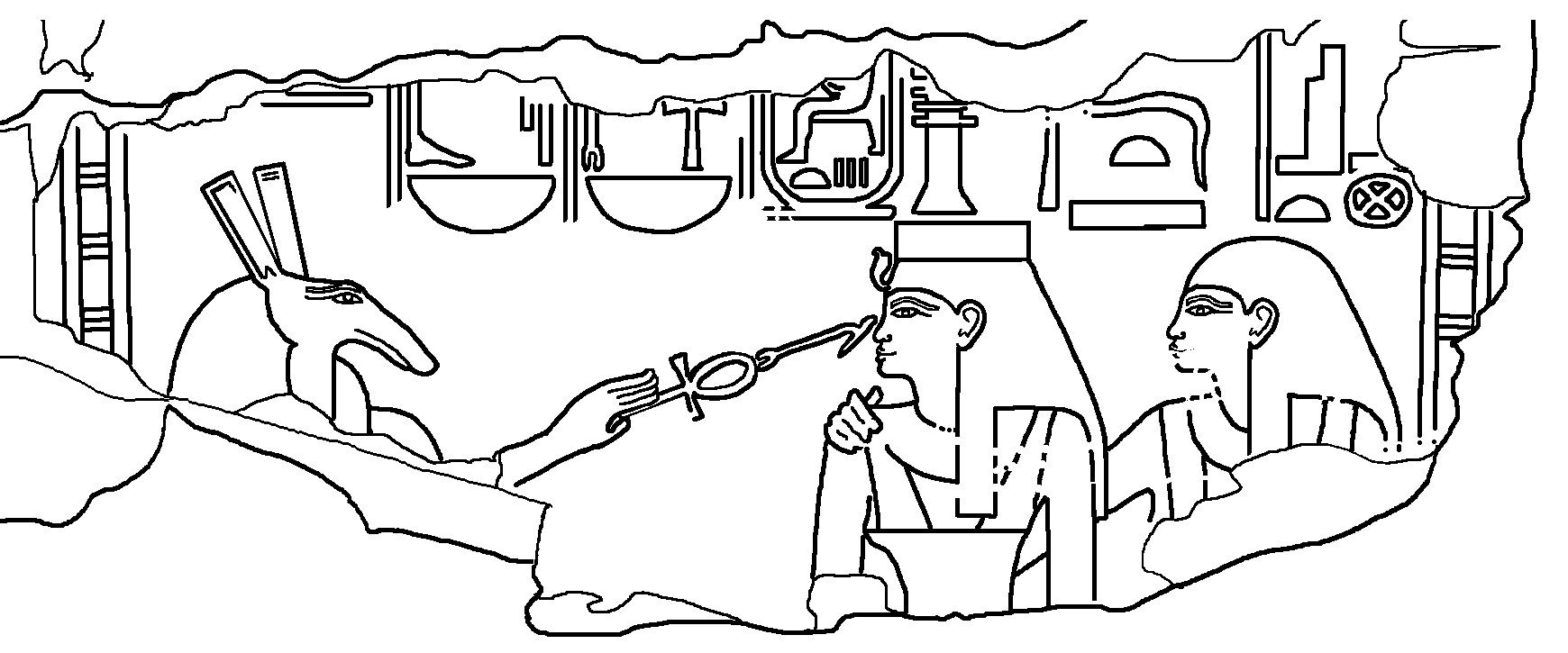
|
I'd first seen this scene at Alain Guilleux's "Une promenade en Egypte" website, and the descriptive text has been translated from his French. I attempted a trace, and then found a better photo from which to trace in Eugene Cruz-Uribe's article "Seth, God of Power and Might" which appears in the 2009 issue of Journal of the American Research Center. As I traced the close-up of Set's image, I thought, "Where have I seen those damage breaks before? They are following a line I've seen elsewhere." "Destroyed monument of Thutmose II", Hatshepsut was his wife! Yes, the close-up of Set is from the larger piece! Andrzej Cwiek explains that originally this scene was placed symmetrically, with a scene in which Thutmose II was being "crowned by Osiris and Isis" (Cwiek, “Fate of Seth in the Temple of Hatshepsut at Deir el-Bahari”, for Centre d'Archeologie Mediterraneenne de l'Academie Polanaise des Sciences, Etudes et Travaux XXII, 2008, page 56)
|
Forward...
Go Back to Archives...
Go Back to Main Journal Index Page...
Go to Index of Joan's pages...
![]()
© Joan Ann Lansberry